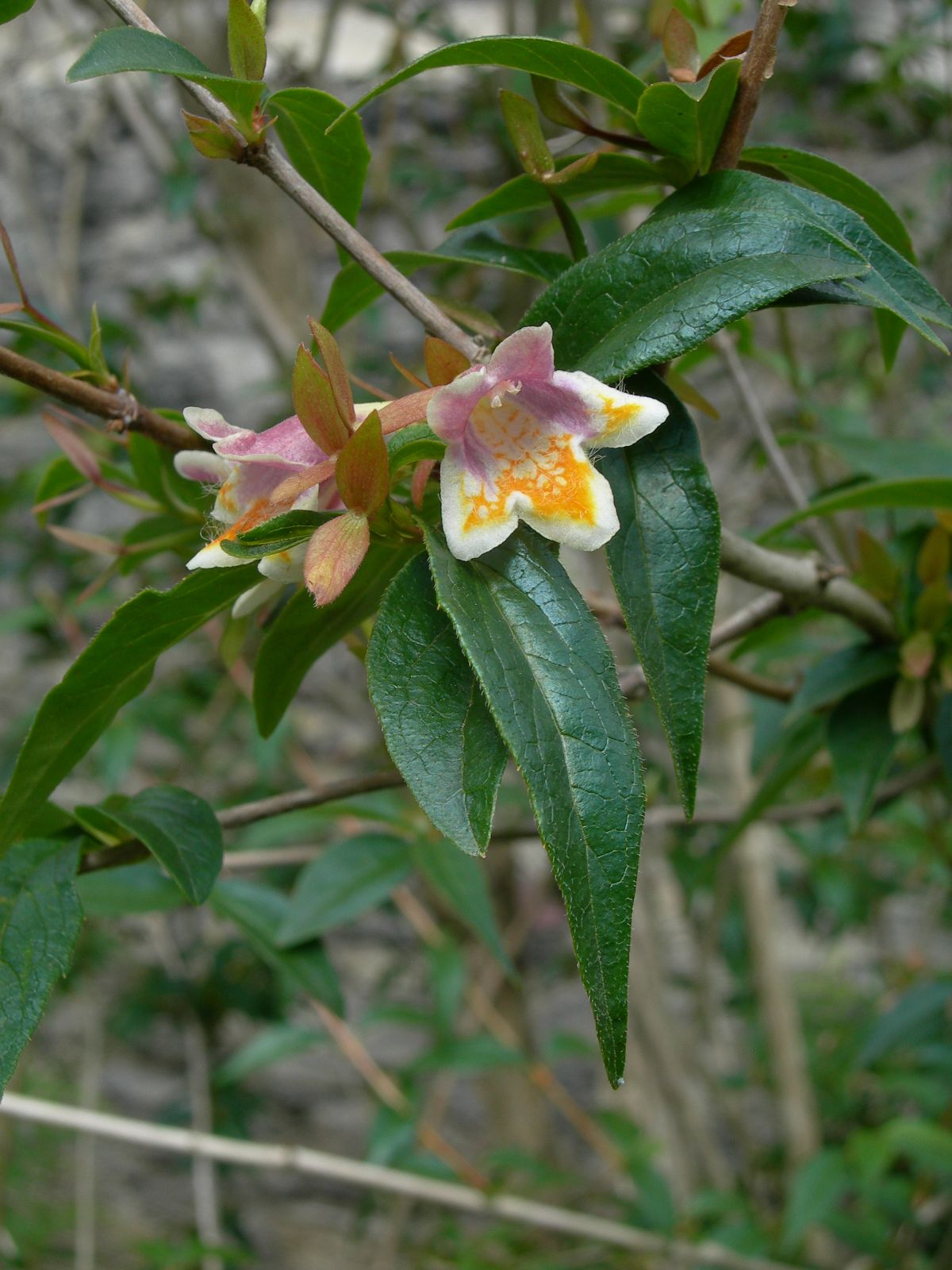Diabelia serrata
Sponsor
Kindly sponsored by
The Normanby Charitable Trust
Credits
Owen Johnson (2021)
Recommended citation
Johnson, O. (2021), 'Diabelia serrata' from the website Trees and Shrubs Online (treesandshrubsonline.
Genus
Synonyms
- Abelia serrata Sieb & Zucc.
- Linnaea serrata (Sieb. & Zucc.) Graebn.
- Abelia buchwaldii (Graebn.) Rehder
- Linnaea buchwaldii Graebn.
- Abelia gymnocarpa (Buchw. & Graebn.) Rehder
- Linnaea gymnocarpa Graebn. & Buchw.
- Abelia tomentosa Koidz.
Shrub to 2 m tall. Shoots green or reddish, glabrous to densely woolly. Leaves ovate or elliptic, 0.6–8 × 0.3–3.2 cm, tip acute to long acuminate, base rounded to cuneate, hairy along veins; margin entire or serrate, often ciliate; petiole 1–3 mm. Flowers in May, paired or more often in clusters of 4–7 on a 1–5 mm peduncle; calyx lobes 2, bi- or trifid or more often divided into 3 or 4 spreading segments; lobes oblong to ovate, 5–9 × 1.5–4 mm, greenish; corolla 9–22 mm, yellow, white or reddish, more or less tubular, with or without an inflated mouth, the mouth bearded and strongly marked with orange; upper lobes 2–4 mm long and bilobed, lower lip 5–6 mm long and spreading; nectary cushion fused to the corolla tube. Ovary 5–10 mm long; style 17–18 mm, sometimes long-exserted, sparsely hairy. Fruit ripening September, crowned with usually 2 sepals. (Landrein & Farjon 2020; Flora of China 2021).
Distribution China Zhejiang (Wenzhou Prefecture) Japan Honshu, Kyushu, Shikoku
Habitat Sunny hills and rocky places, sometimes on limestone or serpentine.
USDA Hardiness Zone 6
RHS Hardiness Rating H6
Conservation status Least concern (LC)
Diabelia serrata is a complex taxon which has probably evolved through recent introgression with sympatric species; in attempting to synthesise its taxonomy Landrein & Farjon (2020) recognise eleven formae, including f. wenzhouensis (endemic to China) and f. sanguinea with interesting, peach-coloured pink, orange and white flowers.
The species was introduced to the UK in 1879 by Charles Maries from Mount Fuji and persists in just a few collections in the west, though it was dismissed by Bean as ‘of little worth’ as a garden plant (Bean 1976). Most of the wild forms have ‘poached egg’ yellow and white blooms which individually recall that of the European herb Common Cow-wheat (Melampyrum pratense), but are rather bigger. At the Royal Botanic Garden Edinburgh, plants accessioned under 19940187 were collected in Shikoku by Yuji Kurashige (Kurashige 665) under the name var. buchwaldii (Graebn.) Nakai (Royal Botanic Garden Edinburgh 2021) (f. buchwaldii (Graebn.) Landrein). Michael Dirr (Dirr 2009) describes a ‘beat up’ plant which once grew at the Royal Botanic Gardens, Kew, and a much better one in the more continental climate of the Keith Arboretum in North Carolina. However, the vernacular name which is sometimes encountered in American literature, ‘Glossy Abelia’, is puzzling since this fully-deciduous plant has thinner and matter leaves than any of the widely-cultivated Chinese forms of Abelia, suggesting the possibility that an imposters have been cultivated in America under this name. In the wild, D. serrata is often found over limestone (Landrein & Farjon 2020), though The Hillier Manual of Trees and Shrubs suggests it is ‘not for shallow chalk’ (Edwards & Marshall 2019).

